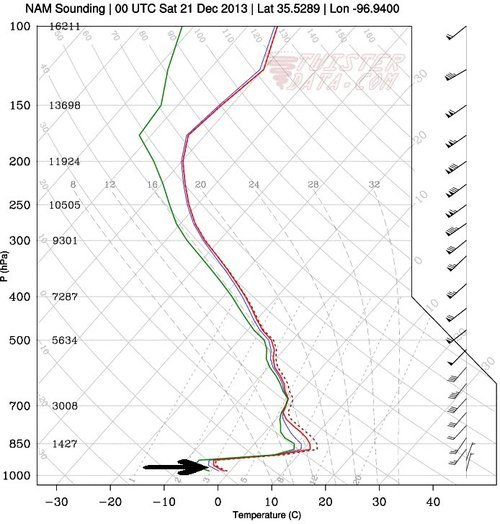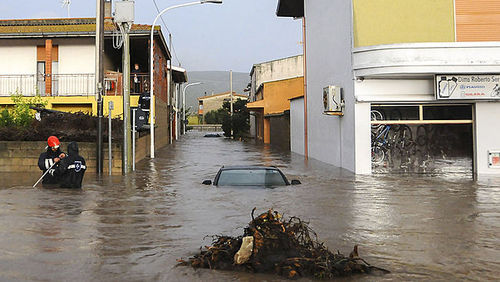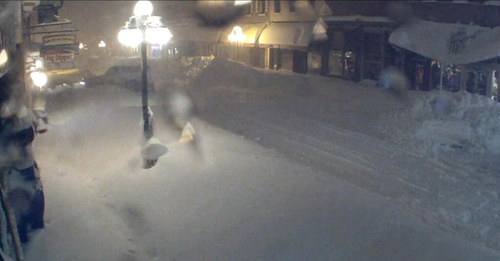
Welcome to our summary of the 2014 thunderstorm season across Southern Manitoba! This post will summarize these statistics and compare this year’s thunderstorm season to the last couple seasons. In case you are curious, a brief explanation of how I gathered these statistics can be obtained by following this link.
Thunderstorm Days

In total, there were 94 thunderstorm days across southern Manitoba in 2014 (southern Manitoba being defined as the area shaded in the map above). This was slightly higher than in 2013 (89 thunderstorm days) but still much lower than in 2012 (~ 109 thunderstorm days). This is mainly the result of a late spring and thus, a late start to the season in both 2013 and 2014. 2012 featured an early spring with numerous thunderstorm events in March and April. This year, no thunderstorms occurred in March and only 2 thunderstorm days occurred in April. In fact, southeastern, eastern and Interlake portions of southern Manitoba did not see their first thunderstorm until the third or fourth week of May, at least a month later than usual. Winnipeg didn’t get its first thunderstorm until May 20, the 8th latest first thunderstorm on record since 1953.
The distribution of thunderstorm days, as seen in the map above, was fairly uniform across southern Manitoba overall. Similarly to 2012 and 2013, the region east of Lake Winnipeg saw notably less thunderstorm activity.
Interestingly, there was a thundersnow event in January! Although lightning detection products did not record the lightning, lightning was reported by residents west and southwest of Winnipeg on the evening of January 15; more specifically between Carman and Winkler. This was associated with a very strong cold front behind a potent Alberta Clipper. This clipper also brought record winds and high temperatures across the Prairies. Unfortunately, I could not find any data on winter thunderstorm activity in Manitoba historically. The only other occurrence of lightning in January I could find was a report in the Daily Free Press of lightning on January 16, 1876 (Penziwol, 2004). This is not to say that lightning has never occurred in January since then, but that is the only other report I could find. Nonetheless, this year’s thundersnow event was extremely rare for Manitoba.
In Winnipeg, 23 thunderstorm days occurred at the airport in 2014. Although this is the most since 2010, it is still below the normal of ~26–27 thunderstorm days. In fact, we have not had an above normal season since 2007. The last thunderstorm recorded was on September 8, tying for 10th earliest last thunderstorm since 1953. This puts the season at 112 days long, the 5th shortest on record. However, this statistic is a bit misleading. Thunderstorms did occur in southern parts of the city 3 times after September 8, including 2 events in October. I recorded 27 thunderstorm days here in South St Vital this year and the season lasted 156 days.
Severe Thunderstorm Warning Days

In total, there were 34 days with a severe thunderstorm warning issued in southern Manitoba. This is similar to 2012 but much less than in 2013 (45 severe thunderstorm warning days). The first warning was issued on May 24 and the last on September 8, putting the season at 108 days long. This is a tad less than in 2013 (110 days long) and 2012. As has been the case the last few years, southwestern Manitoba saw the most severe thunderstorm warning days in 2014.
Tornadoes

There were 4 tornado warning days in 2014, half the number in 2013 (8 days) but double the number in 2012 (2 days). The Red River Valley area saw the most. In fact, the warning zone southeast of Winnipeg, which Steinbach is situated in, saw 3 tornado warning days, the highest of all warning zones in Canada this year. However, only one of these warnings actually produced a confirmed tornado (an EF–0 southeast of La Salle on July 26).
From what I could find, 4 EF–0 tornadoes were confirmed in Manitoba this year. However, it is likely that there were more (many go unconfirmed). July 26 was the biggest tornado day of the year with 3 landspout tornadoes confirmed (all EF–0). 2 were in the Interlake near Waterhen and the other was southeast of La Salle.
A tornado might have touched down (unconfirmed) southwest of Winnipeg July 5. Part of the A Weather Moment team (Scott, Matt, Julien & Kyle) watched the storm as it evolved and managed to capture at least 2 funnel clouds. One of these is seen in Matt’s funnel cloud picture at the top of this post. After reporting this funnel to Environment Canada, a tornado warning was issued for the City of Winnipeg.
Monthly Frequency

For the first time since I started gathering these statistics in 2010, the busiest month of the year for thunderstorm activity across southern Manitoba was in June. The maximum is typically in July, but this year there was an unusual local minimum in activity in July with just 18 thunderstorm days. Residents in southwestern Manitoba were especially hard hit in June with multiple rounds of heavy thunderstorms and rains mid-late month. Over 150 mm of rain fell in the heaviest hit areas in just a period of 2 weeks. 251.6 mm of rain fell in June in Brandon, the rainiest June on record since 1890. 219.8mm of this fell in just the last 12 days of the month. Extensive overland and river flooding occurred as a result, as many of you likely still remember well.
If interested in comparing, follow these links for the 2013 and 2012 graphs: 2013, 2012.
Reference Cited
- Penziwol, Shelley. (2004). Storm Signals: A History of Weather In Manitoba. Great Plains Publications. Winnipeg, Manitoba. Page 3.






